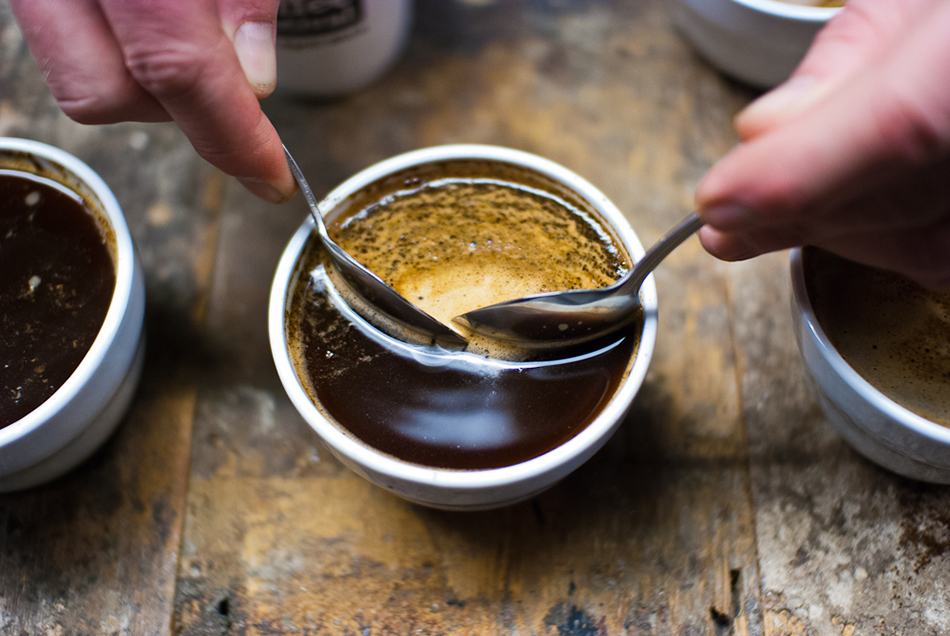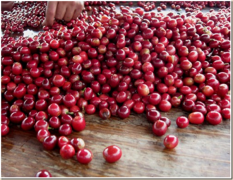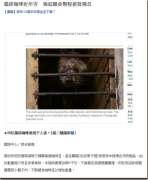The fourth wave of boutique coffee is coming from the coffee producing area of Sumatra!

Professional barista communication, please pay attention to coffee workshop (Weixin Official Accounts cafe_style)
Sumatra coffee has never been considered "fine" because fine, like wine, places great emphasis on origin, elevation, variety, and even growers. The traditional way of trading in Sumatra is a system of layer acquisition, which is not easy to trace back to the source, and the quality of coffee beans is also uneven. But now, the transforming mantenin is already leading Sumatra to the fine coffee market!
The third wave of coffee refinement is mainly launched from Europe and America. Some people say that it is to make the price of coffee beans get rid of futures prices, while others say that it is to make the regional flavor of coffee beans more obvious, but no matter how, the essence of coffee beans is emphasized. Coffee producers take advantage of regional microclimates, focus on variety selection and improvement, improve planting techniques, and select green beans, and find more ways to improve flavor in green bean fermentation treatments. The third wave of coffee refinement can be seen as turning coffee into red wine, making traceability more and more important!
The fourth wave of fine coffee transformation focuses on regional flavor differentiation among producing areas, that is, differences between processing plants or cooperatives. In the past, coffee beans produced in producing countries were export-oriented, but with the popularization of coffee and the improvement of national economies, the original coffee bean exporting countries have also become big consumers. Brazil, for example, the world's largest coffee producer, saw for the first time in 2015 that domestic demand for coffee exceeded exports. Other producers, such as Sumatra and Ethiopia, are beginning to see this trend.
For example, if you buy ECXB, it means that the coffee comes from a small town, but it doesn't have the flavor of ECXB…How can that be? It's like going to Nantou to buy Alishan tea, but it doesn't taste as expected. It's confusing ~ that's because most people only think of yejia sherphine as a noun for producing area, but in fact yejia sherphine is a noun for "flavor". So if you buy coffee beans from our house and see that it says yegha sherphine kocher, it means kocher town yegha sherphine flavored coffee beans. (Cochir is our most frequently introduced yegga sherffin-producing coffee.) Of course, we have also introduced Wana fruit and Jinlei Na Ambaya coffee, the flavor is very good, each has its own characteristics!)
As previously introduced in the small series, the traditional trading methods in Sumatra producing areas are sold through the markets of various local towns (small series: haven't read? You can go to "Pesticide free production area selection: Sumatra production area introduction, set up a link), small buyers after the acquisition, will buy coffee cherries everywhere, sell to distributors, distributors and then sub-district to process coffee beans, and then graded sales to traders. This structure makes the origin untraceable and the quality uneven. Because of the limited acreage available to smallholders, it is difficult to grow a single variety of coffee, making it impossible to have a single treatment, a single variety of coffee (the variety here does not refer to Arabica or Robasta, but to the respective species of iron pickup, bourbon, etc.). This system became a stumbling block to Sumatra's move to fine coffee, so Mantenin began to use traceability methods, such as the Plateau Project between Taiwan and Mantenin (we sell Star Town in Sumatra, Kalina in Bali), to try to emerge in the fine coffee market.
The fourth wave of specialty coffee has prompted more and more cooperatives in Sumatra and other Indonesian producing areas to focus on single varieties and process, especially in Aceh and Bali. The future of Mantenin is bound to keep pace with the cultural development of fine coffee!
Important Notice :
前街咖啡 FrontStreet Coffee has moved to new addredd:
FrontStreet Coffee Address: 315,Donghua East Road,GuangZhou
Tel:020 38364473
- Prev

Nicaragua Maragogype coffee is like bean coffee, not like shit coffee.
Professional barista communication please pay attention to the coffee workshop (Wechat official account cafe_style) extra-large elephant bean cherry coffee ~ is three times the size of ordinary Arabica beans and is the world's largest coffee bean flavor spectrum: strawberry, berry pulp sweet, nutty, soft and full aroma, nutty finish, slightly sour and sweet, with a smooth taste, the overall balance of this variety is made from iron.
- Next

Kopi Luwak is inhumane coffee? Not all civets are abused!
The exchange of professional baristas please follow the coffee workshop (Wechat official account cafe_style) yesterday, the editor saw the following picture. The mood is a little mixed. Citing the British Guardian, civet (masked palm civet or cat shit) coffee beans have become popular in recent years. Civets are raised by producers of civets. In order to increase the output of civets coffee beans, the civets are kept in small cages and continuously fed with coffee.
Related
- Detailed explanation of Jadeite planting Land in Panamanian Jadeite Manor introduction to the grading system of Jadeite competitive bidding, Red bid, Green bid and Rose Summer
- Story of Coffee planting in Brenka region of Costa Rica Stonehenge Manor anaerobic heavy honey treatment of flavor mouth
- What's on the barrel of Blue Mountain Coffee beans?
- Can American coffee also pull flowers? How to use hot American style to pull out a good-looking pattern?
- Can you make a cold extract with coffee beans? What is the right proportion for cold-extracted coffee formula?
- Indonesian PWN Gold Mandrine Coffee Origin Features Flavor How to Chong? Mandolin coffee is American.
- A brief introduction to the flavor characteristics of Brazilian yellow bourbon coffee beans
- What is the effect of different water quality on the flavor of cold-extracted coffee? What kind of water is best for brewing coffee?
- Why do you think of Rose Summer whenever you mention Panamanian coffee?
- Introduction to the characteristics of authentic blue mountain coffee bean producing areas? What is the CIB Coffee Authority in Jamaica?

